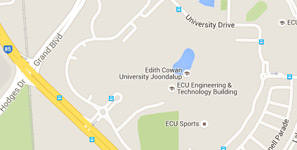Project Outline:
Neurodegenerative and cerebral vascular disorders continue to challenge our understanding of neuroplasticity, focal localisation, and connectivity from clinical and neuroscientific perspectives. For example, the neuroimaging evidence to date, regarding stroke recovery has tended to focus specifically on motor and/or functional aspects including language recovery, providing anatomical markers of lesion location and size and subsequent function. More recently there has been increasing interest in both structural and functional connectivity approaches in understanding stroke recovery (1, 2) with the emphasis also on motor recovery (3). The human connectome project (4) has given rise to understanding brain connectivity in more detail and has facilitated investigation into structural and functional connectivity from a network perspective in healthy ageing (5) and also for neurodegenerative disorders (6) and neurological disorders post stroke (7-9).
The mechanisms underlying emotion-cognition interactions in healthy brain functioning have been well established from neuroimaging modalities’ evidence (10). However, from studies investigating changes to the ageing brain, the evidence of this interaction is less well known (11), especially following age-related associated diseases such as dementia, cerebral small vessel disease and stroke. The aim of this research is to identify and establish what happens to the cognition-emotion interaction following neurodegenerative and cerebral vascular disorders using neuropsychological assessment and multimodal neuroimaging techniques including connectivity evidence where available. Neuropsychological and neuroimaging evidence of the emotion-cognition interaction will be identified from healthy ageing studies and these in turn will be compared to studies investigating cognition and mood in neurodegenerative and cerebral vascular disorders.
This project is ideal for a nursing candidate that may have a strong interest in cognitive and psychological health of older adults with a particular interest in neuroanatomy and physiology. Full training will be provided on reviewing relevant neuropsychological and neuroimaging evidence for the purposes of the research work.
References
- Mandeville ET, Ayata C, Zheng Y, Mandeville JB. Translational MR Neuroimaging of Stroke and Recovery. Translational stroke research. 2017;8(1):22-32.
- Donnellan C, Hevey D, Hickey A, O'Neill D. Adaptation to stroke using a model of successful aging. Neuropsychol Dev Cogn B Aging Neuropsychol Cogn. 2012;19(4):530-47.
- Grefkes C, Fink GR. Connectivity-based approaches in stroke and recovery of function. The Lancet Neurology. 2014;13(2):206-16.
- Sporns O, Tononi G, Kotter R. The human connectome: A structural description of the human brain. PLoS computational biology. 2005;1(4):e42.
- Hirsiger S, Koppelmans V, Merillat S, Liem F, Erdeniz B, Seidler RD, et al. Structural and functional connectivity in healthy aging: Associations for cognition and motor behavior. Human brain mapping. 2016;37(3):855-67.
- Iturria-Medina Y, Evans AC. On the central role of brain connectivity in neurodegenerative disease progression. Frontiers in aging neuroscience. 2015;7:90-.
- Baldassarre A, Ramsey LE, Siegel JS, Shulman GL, Corbetta M. Brain connectivity and neurological disorders after stroke. Current opinion in neurology. 2016;29(6):706-13.
- Lim J-S, Kang D-W. Stroke Connectome and Its Implications for Cognitive and Behavioral Sequela of Stroke. J Stroke. 2015;17(3):256-67.
- Donnellan C, Hickey A, Hevey D, O'Neill D. Effect of mood symptoms on recovery one year after stroke. Int J Geriatr Psychiatry. 2010;25(12):1288-95.
- Dolcos F, Iordan AD, Dolcos S. Neural correlates of emotion–cognition interactions: A review of evidence from brain imaging investigations. Journal of Cognitive Psychology (Hove, England). 2011;23(6):669-94.
- Grady C. The cognitive neuroscience of ageing. Nature reviews Neuroscience. 2012;13(7):491-505.
Project Area: Stroke and associated cerebrovascular disease
Supervisor(s): Professor Claire Donnellan
Project level: PhD
Start date: Ongoing
